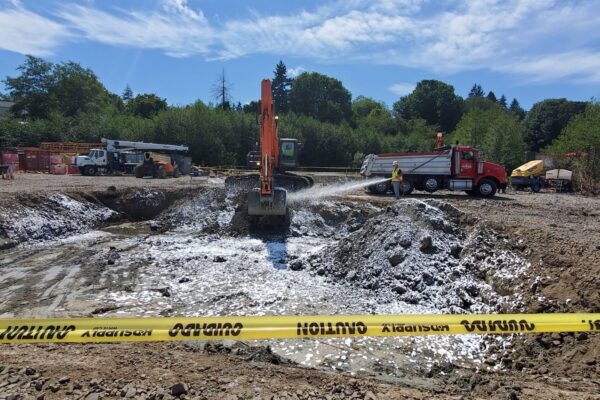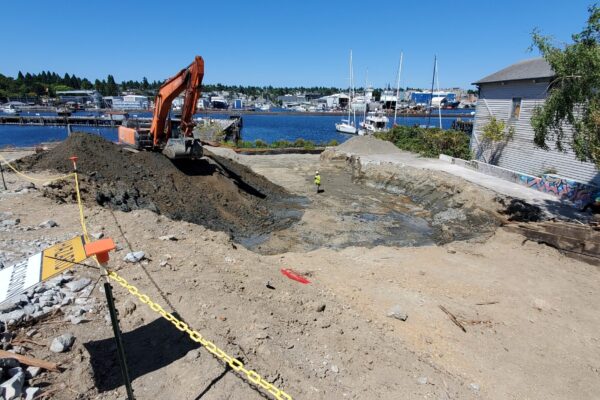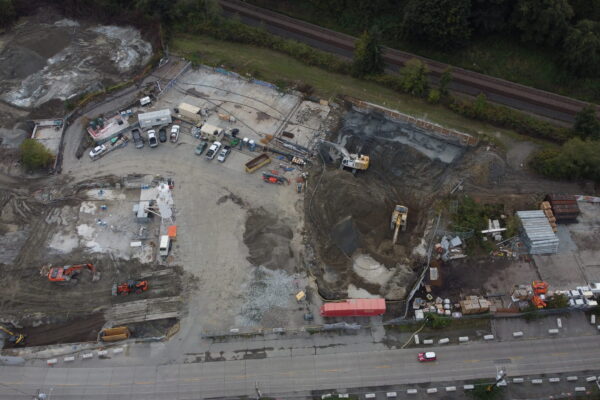Client: Cantera Development Group, LLC | Location: Seattle, WA
Pioneer served as an owner’s representative to a nationwide Brownfields redevelopment firm in the cleanup of a former bulk oil petroleum facility located in Seattle, Washington.
Historical operations began at the facility in the early 1940s, primarily to support World War II efforts, and included bulk storage and distribution of petroleum products including diesel, gasoline, kerosene and mineral spirits. Petroleum products were delivered to the terminal via rail cars, barges and tanker trucks, and stored in large above ground storage tanks. Drums were filled with fuel in the on-site barreling sheds and transferred to the shipping dock via a drum incline conveyor system. Petroleum was then either transported via ships/barges, or pumped directly into tanker trucks. Other facility operations included oil and solvent storage, machine shop operations and hydraulic repair. Facility operations ceased in 2001.
Since July 2018 and as part of the due diligence process, the site was enrolled into the voluntary cleanup program (VCP) with the State of Washington Department of Ecology (DOE). Supplemental remedial investigation (RI) activities were performed in 2019 and 2020 to fill the remaining data gaps necessary to complete the RI/FS (Remedial Investigation/Feasibility Study) for the Property. A final RI/FS and Corrective Action Plan (CAP) were approved by DOE in late 2020. The primary contaminants of concern (COCs) identified at the site included benzene, total petroleum hydrocarbons (TPH), trichloroethene (TCE), vinyl chloride, and pentachlorophenol. The selected remedy in the FS included a combination of excavation and off-site disposal, in-situ solidification and stabilization (ISS), in-situ groundwater treatment using a trademarked colloidal biomatrix (PlumeStopTM) mixed with sulfated microscope zero-talent iron (mZVI), installation of an interceptor trench and permeable reactive barrier (PRB) wall to capture and treat upgradient off-site contaminated groundwater, in-situ groundwater treatment through application of an oxygen releasing pellet compound, and installation of a cap in a portion of the site.
Asbestos abatement and building demolition activities were completed at the site in the spring of 2021. Remediation activities commenced in July 2021 and consisted of excavation and disposal of nearly 16,000 tons of impacted soil from seven different cleanup areas throughout the site; ISS of approximately 28,000 cubic yards of impacted soils; installation of a shallow groundwater interceptor trench with a PRB treatment vault; and in-situ groundwater treatment. This work was successfully completed in December 2021, documented in the Phase 1 Remedial Action Completion Report (RACR), which DOE subsequently approved in August 2022.
Following completion of remediation, a Long-Term Compliance Monitoring Plan (LTCMP) was prepared with the following primary components: 1) Soil and Remedial Element Management Plan (SREMP), 2) Groundwater Monitoring Plan (GMP), and 3) Vapor Intrusion Assessment and Mitigation Plan (VI Plan). DOE approved the LTCMP in February 2023. Implementation of the approved GMP commenced January 2023 and is currently ongoing throughout the entire site.




